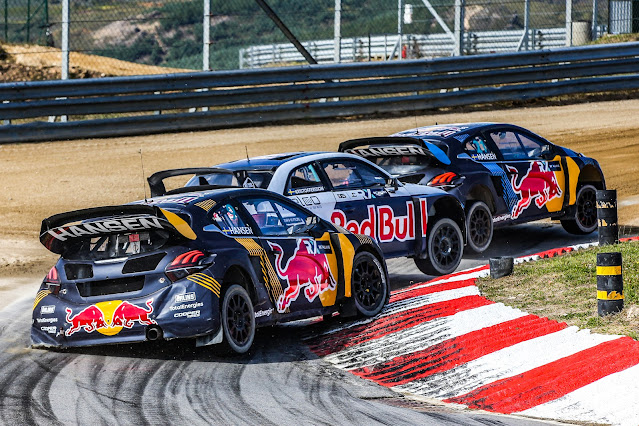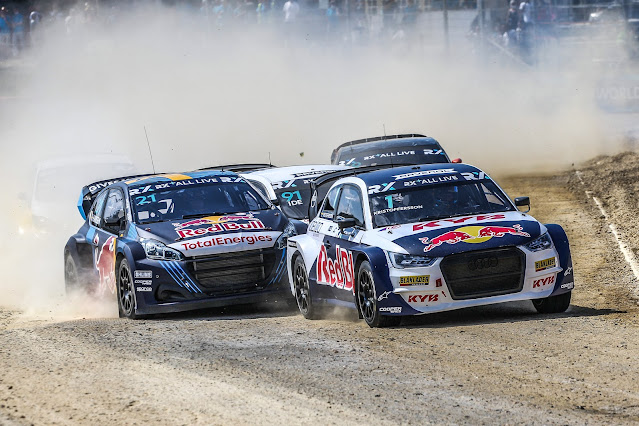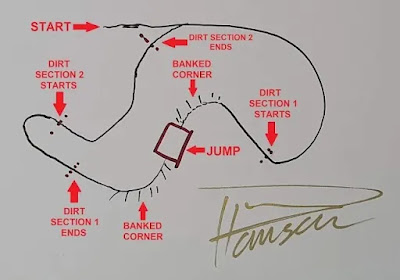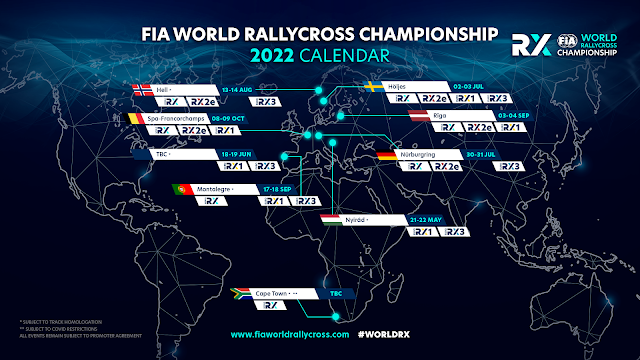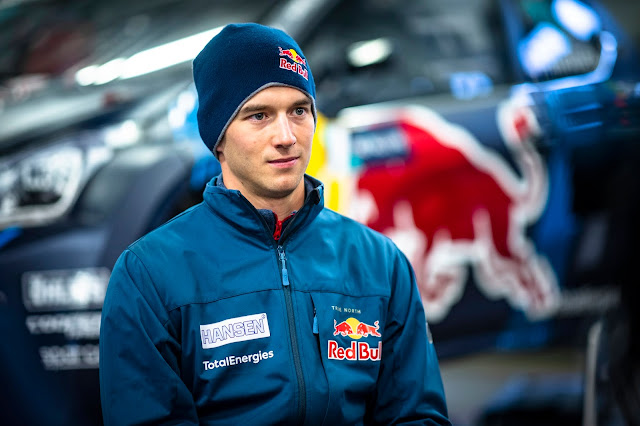.jpg) |
| PHOTO CREDIT: Red Bull Content Pool. |
So, while we are on the subject, let’s talk tyres, shall we? They
make the world move in more ways than one... Moving from point A to B,
or the transportation of goods and services, which is essential to
businesses and countries' economies, without them we’d be going
nowhere slowly.
There are so many different tyres brands available for everyday use, but some that stand out above the
rest are: Pirelli, Michelin, Bridgestone, Cooper Tires, Dunlop,
Yokohama, to name a few. This is mainly due to their involvement in
motorsport, but interestingly enough, despite their strong
marketability, DID YOU KNOW: the
LEGO Group is the world's largest tyre producer. "After
introducing their tyres in 1962 with a Lego kit set, the products
have surged in popularity. Lego produced 318 million mini rubber
tyres in 2011, making it the largest tyre manufacturer in the world.
Coming in second is Bridgestone, with 190 million in 2011."
While
the LEGO Group is the biggest producer, their tyres won’t fit on
our daily vehicles, and because we are talking about tyres, it’s
fascinating to note that different manufacturers or brands have
different tread patterns based on their research and development.
Technology and innovative solutions are also key to development.
Motorsport
is another way of learning, gaining marketing popularity, and
improving tyres for road use. In motorsport, tyre grip is essential
in any condition, and that is exactly the case in day-to-day living,
because without grip moving from point A to B in cars or heavy modes of
transport would be unsafe.
So, what’s the real
difference between road car tyres and racing tyres? Well! Certain
racing tyres are developed with performance and grip in mind with
certain tread designs or even slicks available, whilst road tyres are
designed for all weather conditions, whether it be dry, rainy, or
snowy conditions (in some countries).
There is a wide
range of tyre manufacturers across many national and international
motorsport championships, but as motorsport makes a shift to greener
technologies and different methods to extract performance. There is
never one tyre or manufacturer that can be transferred between
series, and with the recent push to electric power, example, the 2022
FIA World Rallycross Championship, it would be quite interesting to learn more about tyres within a particular championship.
In the FIA World Rallycross
Championship, Cooper Tires has been the official tyre supplier since
the championship's inception back in 2014. Their involvement in
rallycross started in the early 2000’s under the AVON tyre brand.
With a focus on rallying and rallycross, Cooper Tires also provides
tyres for the Road to Indy championship as well.
With
rallycross being a dual-surface discipline, the demands for
rallycross requires tyres that work on tarmac and dirt/gravel, which
means drivers and teams need tyres that enable them to extract or
gain as much grip as possible through corners and when accelerating.
However, putting power on the road or gravel comes with its own set
of challenges, such as tyre wear, sliding, and overheating.
So,
how do teams solve these issues? It may sound simple, but it could be
more challenging than expected, and it all comes down to finding the ideal
set-up.
An example of this would be the Hansen Motorsport
(Peugeot). They are historically strong on high abrasive tracks, but
with a few damper and suspension changes, the team gains a bit more
grip on loose surfaces (dirt sections).
Building a tyre
that can handle the stresses and strains of rallycross machinery is
something Cooper Tires has done brilliantly over the years. So, why
not learn a little bit more about the manufacturer behind the RX1e
cars, who we all know and love?
 |
| Matthew Vincent, Cooper Tires Product Technology Manager - Motorsport PHOTO CREDIT: Matthew Vincent. |
Matthew attended his first rallycross round in 2009 at Lydden Hill, where the then 14-time European Rallyross Champion, Kenneth Hansen, raced his Citroen C4 to victory on the AVON tyre brand (now known as Cooper Tires).
With 25 years of experience and 15 years of managing the development of the Rallycross product range for Cooper Tires, Matthew is the ideal person to gain a better understanding of tyres in rallycross and the tyres for everyday use.
So, how did the Cooper Tires and FIA World Rallycross Championship partnership come about?
"At that time, the FIA World Rallycross Championship evolved out of the FIA European Championship. At that time, it was open to all tyre manufacturers, and we were very active in developing products in this area. From the mid-1990s to the present, almost every FIA European Rallycross Champion has used our product. So, when the FIA World Championship was formed, it was only natural for us to continue this long-running involvement and to be an active part of its future, as we are today with the introduction of electric," Matthew Vincent explained.
Let’s talk design. The design of tyres for any motorsport championship is quite challenging and rather demanding. Could you explain to us how Cooper Tires are designed to prevent an unfair advantage between teams?
MV: "Designing tyres for rallycross can be quite challenging, especially when you consider the relative freedom in the regulations the teams have in the suspension design of the car when compared to most other championships. On top of this, you will find quite a range of driving styles, with some drivers almost drifting every corner and others that are much more precise. These can result in quite different car set-ups, but the advantage of the Cooper tyre is its specific type of cross-ply construction, which is able to work within a wide range of setups and still perform. Importantly, this tyre has not been designed around one specific car or setup but is a culmination of over 20 years of development."
To gain a better understanding of tyre manufacturing. Could you be able to talk us through the manufacturing process of a set of tyres for the World RX championship? And, how many tyres are produced each year for the championship?
MV: "Unlike a road car tyre, which can be produced on highly automated machinery and, as a result, very quickly, the complex construction and specialised materials used in the rallycross tyre mean these take longer to produce."
"All our rallycross tyres are produced in our factory in England, where specially trained operators apply the multiple plys of fabric and other components to produce what is known as greenstock (unvulcanised tyres). These are then cured (vulcanised) in presses at a specific temperature and time that are chosen to provide the best performance of the tyre; even a few degrees or minutes difference can have an impact on the product's performance.We have to produce for, and have available at, each event enough dry and wet tyres to cover all eventualities, and with each car being allowed up to 12 dry and 12 wet tyres per weekend, this can be quite a significant number."
Currently, there are two different compounds in World RX . The dry and wet tyres, which are pretty self-explanatory. Are there any plans by Cooper Tires to expand the range of dry tyres to add some spiciness to the racing, as different compounds could make a huge difference in performance?
 |
| PHOTO CREDIT: Red Bull Content Pool |
MV: "The tread compound plays a huge part in the performance of the tyre, and the current compound has been specifically chosen to meet the challenges of working in a wide range of conditions and temperatures. We work closely with the promoter and the teams on the future direction of the product to ensure we don’t just have the best tyres but help provide the best racing and entertainment for the spectators."
As the world moves towards sustainability and greener technology, so are Cooper Tires, and Matthew explains a little bit more on this: "A key direction we are looking at, though, is looking at the use of sustainable materials in the tyre whilst maintaining or even improving performance. We have been using bio-sourced and recycled materials in the rallycross tyre for some time, but as the evolution of the tyre continues, we are looking at increasing these further."
As the years progress, so does the car performance. So, are Cooper Tires altering or tweaking tyre compounds each year, and, if so, how are tyres developed per season?
MV: "We are constantly monitoring tyre performance at every round of the championship to ensure the product is meeting the requirements required of it. You are constrained to some degree when supplying a control tyre to a championship over a fixed term (the FIA World Championship is typically over a three-year period). Unless there is a specific requirement for change, the design of the tyre remains relatively unchanged. However, data we take from the World Championship is used in the development of our rallycross products that are used in other regional/national championships to ensure we continue to be one of the best products in the sport."
With the FIA World Rallycross Championship going fully electric in 2022, there may be additional stresses placed on the tyres. Projekt E saw, drivers constantly on the limit of their cars but constantly dealt with overheating. With that in mind are Cooper Tires planning to make any compound or construction changes to reduce tyre overheating for the new era of rallycross?
MV: "The transition to electric will have a significant impact on the tyres as you have instantaneous torque that provides instant acceleration combined with an increase in the weight of the car. Both of these will place significant additional strain on the tyres which, if not factored into the tyre design, will result in higher tread compound temperatures and also higher wear."
"We have already been successfully running our product on the RX2e cars, which were introduced last year, and this has certainly helped us with the future direction of the tyre. As a result, we are actively testing new evolutions of the rallycross compound to meet these challenges, ready for the start of the season in July."
Having had an indept chat about tyres in the World Rallycross Championship. What is the biggest difference between road tyres and the product for World Rallycross? And what are the differences?
MV: "The race tyres we use in World Rallycross are significantly different to a typical road tyre, the biggest of these being in the construction. Almost all road tyres are of radial construction, meaning the cords of the case run radially from bead to bead and the tread is supported by a steel breaker.”
"The
Cooper rallycross tyre, however, is of cross-ply construction, with
multiple plys of cord running diagonally and with no steel breaker.
This construction provides significant advantages in this type of
racing. In particular, the much larger slip angle the cross-ply
construction can operate at results in much more controllable sliding
through corners. The tread compounds are also very different to a
normal road car tyre, with the compound for the rallycross tyre being
specifically designed to meet demands placed on it that are a world
away from those of a passenger car. This is achieved by using
specific polymers, oils, resins, and carbon black which are selected
to provide maximum grip and consistency."
With thanks to
Matthew Vincent (Cooper Tires), we certainly hope that you’ve
gained a better understanding of tyres in World Rallycross
(motorsport) and the road going specification. For more information,
please visit: Cooper Tires
www.coopertire.co.uk/motorsport-tires/rallycross/




